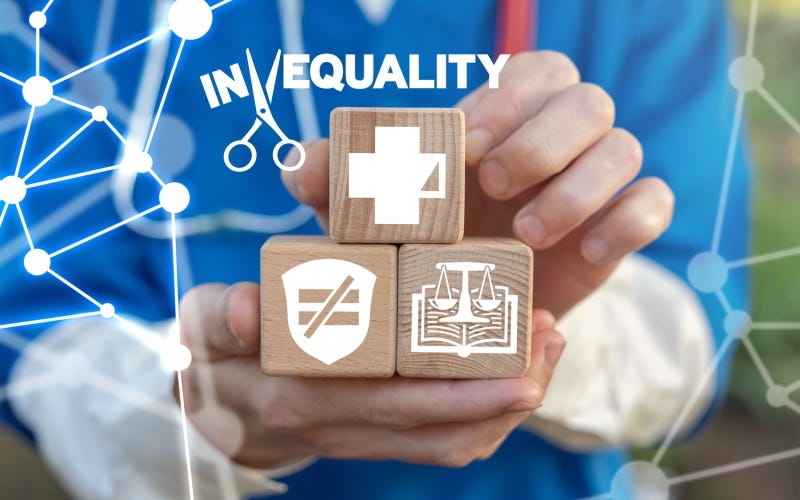Electronic health record systems: an explainer

Technology intersects with most aspects of our lives, and the healthcare sector is no exception. In fact, it’s fair to say that the use of technology, and in particular the use of electronic health records (EHRs) and EHR systems, is helping to transform how healthcare and patient information is recorded and managed in the UK.
As of November 2023, 90% of NHS trusts had adopted electronic patient records, with a total of 189 trusts introducing new systems.
“Electronic patient records (EPR) systems enable organisations to drastically change the way they operate and are the foundation for the use of more advanced technology systems for patient care,” the NHS reported in late 2023. “They boost productivity and experience for staff as well as improving the flow of information between services, making it easier to provide care. The most digitised trusts have also been shown to operate with approximately 10% improved efficiency compared with less digitally mature providers.”
What are electronic health records and EHR systems?
An electronic health record (EHR) is a digital version of a patient’s medical history, one that is maintained and managed by healthcare providers.
An electronic health record system, meanwhile, is what enables all healthcare providers to access the clinical data and health records collected by GPs – and other doctors and specialists – and added to an EHR, offering a joined-up view of a patient's care.
“Comprehensive, accurate health records are central to a modern healthcare system,” the NHS says. “Systems are increasingly allowing patient information to be shared safely and securely across care settings. The rapid evolution of technology over recent years has transformed primary care, improving patient care, quality, safety, and efficiency.”
It’s clear EHRs and EHR systems are a vital part of what’s known as health IT (information technology) and are becoming essential tools in modern healthcare systems. The use of EHR systems is on the rise, and today, they are improving the ability of healthcare professionals to make well-informed treatment decisions by providing accurate and up-to-date medical information in a digital format at the point of care.
The main components of an electronic health record
The core components of a primary care electronic health record typically include:
- Patient information – personal details such as name, age, and any known medical history.
- Clinical data – any past data on a patient’s symptoms, diagnoses, and treatment plans.
- Medication information – information about prescriptions, vaccinations, and medical products as well as drug interactions and allergies.
- Radiology and lab results – test results and imaging reports.
In hospitals, electronic patient records combine patient notes, lab results, observations, and digital prescribing, and then couple these with alert features that “can also help clinicians quickly identify those at risk from conditions such as sepsis.”
According to the NHS, EHRs will also usually include an area for referral management – “recording, reviewing, sending, and reporting of patient referrals” – to support the administration and scheduling of patient appointments.
Examples of electronic health record systems
In the UK, there are several linked and certified EHR systems in use.
For example, according to NHS Digital, the health service uses systems and functionality such as:
- NHS e-Referral Service (e-RS). The e-RS is a digital patient portal people can use to choose their first hospital or clinic appointment with a specialist.
- Patient administration systems (PAS). These are third-party systems referrers and healthcare providers use to manage their patients. And if a PAS is integrated with an e-RS, it can provide directly bookable slots that can be selected and booked into. Example PAS systems include TPP SystmOne, EMIS Web, and INPS Vision.
- Electronic prescribing and medicines administration (ePMA) systems. ePMA systems have allowed the NHS to move away from paper-based pharmacy records and it now uses a number of ePMA suppliers. The most popular of these are CMM, Cerner, Allscripts, Better, Civica, and TPP.
- The NHS England Secure Data Environment (SDE) platform. The NHS England SDE is a data and research analysis platform that gives approved researchers secure access to NHS healthcare data, and is part of a wider NHS research network in England.
The advantages of an EHR system
Electronic health record systems offer a variety of benefits, including:
- Improved patient care. One of the benefits of EHRs is they provide real-time patient records that make information available instantly and securely to authorised users, improving patient safety and the quality of care.
- Enhanced decision-making. EHRs support decision-making by providing healthcare professionals with comprehensive patient medical data – and decision support tools – all in one place.
- Reduced medication errors. Having instant access to a comprehensive log of a patient’s medications and medication history can help medical professionals and pharmacists reduce errors in prescribing, making it one of the important advantages of EHR systems.
- Better coordination. EHR software facilitates better collaboration and workflows among healthcare providers, particularly when a patient’s care spans different departments or organisations within the health service.
- Better research. One of the often-overlooked benefits of electronic health records is having a central system that hosts health information and is made available to authorised researchers, which in turn helps them to better track health trends or challenges within patient care.
Common challenges with EHR systems
While EHR systems have many advantages, there are also a few challenges. For example, there can be interoperability issues between systems, although it’s worth noting that this issue goes beyond digital systems within the NHS:
“The NHS in England is not one single organisation,” NHS England explains. “It is made up of hundreds of different organisations, of differing sizes, at central, national, regional, and local levels, with separate roles and responsibilities. Staff working in these organisations are likely to be entering information in different ways on systems that have different information models supporting different structures and different coding systems.”
Meanwhile, there is also the cost – and the complexity – of EHR systems to consider, as these can be expensive and difficult to implement, particularly for smaller medical practices. Having a system template or interface that is difficult to navigate or operate can also be one of the disadvantages of electronic health records, as it can impact usability for healthcare professionals, make patient access difficult, or prevent people from making meaningful use of the system.
And at all levels, there are data privacy concerns, which can present one of the most pressing disadvantages of EHRs. Patient data must be kept confidential and secure at all times, meaning cyber attacks and data breaches are a cause for real concern.
EHR versus EMR: what’s the difference?
When discussing EHRs, a term that may come up is EMR, or electronic medical record. While sometimes used synonymously, they are not the same thing.
An EMR is essentially just a digitised version of a paper chart or paper record, while an EHR is a complete and comprehensive record of a patient’s health and care, one that can be shared seamlessly with other healthcare providers.
Start your career in healthcare management
Build your knowledge of EHR systems and advance your career in healthcare with the 100% online MSc Healthcare Management at Queen Margaret University, led by the Queen Margaret Business School (QMBS). This flexible postgraduate programme is delivered entirely online, so you can learn from anywhere in the world and complete your studies around your current professional and personal commitments.
The master’s programme will prepare you for work in healthcare management in the UK and beyond, in both the public and private sectors. You’ll gain critical analytical skills and practical skills, as well as the theoretical knowledge you need for professional practice within healthcare management. And through your programme modules, you will build your knowledge in areas such as health systems and policy, human resources management, organisational leadership, community health, and data analytics and decision-making.











The information below is required for social login
Login to your Account